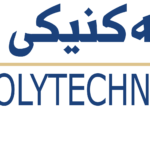- Hoshang Hayder Anwer
- [email protected]
- +9647504259106
- Hoshang Hayder Anwer (MSc THESIS) 20-2-2024
-
ABSTRACT
Reinforced concrete (RC) beams characterized by circular openings present inherent structural challenges, resulting in a compromise of their load-bearing capacity and overall structural integrity. This thesis endeavors to confront and resolve this issue through the implementation of an innovative approach involving Near Surface Mounting (NSM) steel bars. Circular openings, integral to architectural designs, frequently engender a diminution in the strength of beams. This study investigated the effectiveness of utilizing near-surface mounted (NSM) steel bars to restore the shear strength of deep beams and the presence of openings in slender beams. The experimental work involved testing fourteen simply supported reinforced concrete beams. These beams were divided into two groups, each consisting of beams with different shear span-to-depth ratios (a/h = 1.5 and 3.65). Two specimens served as control samples, while the remaining beams had openings located at various positions. The openings were categorized as large or small, with opening height ratios (ho/h) of 0.4 and 0.2, respectively. In the second group, six specimens were strengthened using near-surface mounted (NSM) steel bars arranged in three different stirrup configurations: (square, diamond, and parallelogram). All the beams had a cross-section of 100 mm × 200 mm and a total length of 2000 mm. The variables examined in the tests included the sizes and locations of the openings, the diameter of the bars, and the arrangement of the strengthening bars around the openings. The test results revealed that the presence of openings in the beams led to a reduction in the ultimate load. For specimens with large circular openings in the deep beam's shear zone, large circular openings in the slender beam subjected to shear, large circular openings subjected to shear and flexural loads, and small openings in the slender beam subjected to shear and flexural loads, the ultimate load decreased by approximately 45%, 18.7%, 14.6%, and 19.5%, respectively. Additionally, the test results showed that specimens strengthened with diamond stirrup bars exhibited an improvement in the ultimate load of up to 33.1%. Meanwhile, specimens strengthened with square and parallelogram stirrup bars demonstrated improvements of up to 21.5% and 26.5%, respectively. Changing the bar diameter had a slight effect on increasing the ultimate load, specifically for the parallelogram and square schemes, resulting in an increase of approximately 10% and 7%, respectively.
- Erbil Technical Engineering College
- Civil Engineering Department.
- Structural Engineering.
- Kosrat Dlshad Ahmed
- [email protected]
- +9647506307788
- Bone Fracture - Thesis_compressed
-
Computers have demonstrated their significance in all areas of human existence, including financial services, e-commerce, communication, education, research, innovation, and healthcare. The use of computers to make medical diagnoses has expanded rapidly in recent years. An efficient approach that uses modern technology while requiring fewer man-hours and materials to provide accurate diagnoses. While diagnosing an injury to a human body, doctors often obtain X-ray images of the affected area.
Numerous advanced technological tools have been created to aid doctors and medical facilities in enhancing patient care. The conventional X-ray scanners, known for generating unclear images of bone structures, pose a risk of inaccurate diagnoses of bone fractures when employed by surgeons.
The approach detailed in this research outlines a thorough procedure aimed at improving the precision of image examination within the realm of diagnosing medical conditions using X-ray images. Real-life medical data often suffers from noise, inconsistency, and incompleteness, necessitating robust preprocessing. The initial step involves applying a Gaussian filter to the X-ray images for noise elimination, followed by the utilization of adaptive histogram equalization to improve contrast. Edge detection is then conducted using the Canny technique, integrating adaptive histogram equalization to enhance contrast quality.
The process of feature extraction utilizes the Gray-Level Co-occurrence Matrix (GLCM) for textural feature extractions, yielding a set of 100 features for each image. To classify bone fractures, a range of machine learning algorithms (Decision Tree, Naïve Bayes, k-Nearest Neighbors, Random Forest, and Support Vector Machine) along with deep learning algorithms, such as Convolutional Neural Network (CNN) and transfer learning via VGG-16, are employed to improve overall performance.
As an additional point, the outlined approaches were applied for bone fracture detection using both national and international datasets. In this particular case, 80% of the dataset was employed for training, while the remaining 20% was allocated for testing. The research assessed the effectiveness of diverse algorithms, including Naïve Bayes, Decision Tree, Nearest Neighbors, Random Forest, SVM, and CNN, resulting in accuracy scores spanning from 0.64 to 0.96. Among these, statistically, the highest accuracies were observed in SVM, Random Forest, and CNN in this thesis.
- Erbil Technical Engineering College
- Information Systems Engineering
- Machine Learning


